 Leading Blog | Posts by Month |
 Leading Blog | Posts by Month |
11.30.21

LeadershipNow 140: November 2021 Compilation
See more on
Posted by Michael McKinney at 09:56 AM
11.25.21

Leading Thoughts for November 25, 2021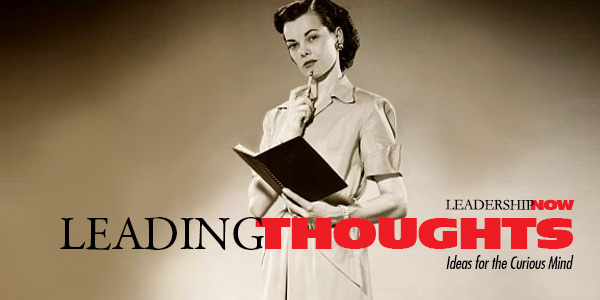
IDEAS shared have the power to expand perspectives, change thinking, and move lives. Here are two ideas for the curious mind to engage with: Pastor Will Johns on seeing the world through the lens of gratitude: “Gratitude is a lens that changes the perception of everything in your life. Your world will be transformed. You will begin to see good things you’ve never noticed before. You will begin to feel joy for things in your life you knew were good but never fully appreciated. You will be able to count your blessings even during difficult circumstances. Gratitude will affect your essential perspective of and attitude toward life. And it will bring you the happiness you have been seeking your entire life. However, it doesn’t happen naturally.” Source: Everything is Better Than You Think: How Gratitude Can Transform Your Life Adrian Gostick and Chester Elton on how the best leaders know how people contribute and actively look for reasons to express gratitude: “It is about seeing good things happening and then expressing heartfelt appreciation for the right behaviors. On the flip side, managers who lack gratitude suffer, first and foremost, from a problem of cognition—a failure to perceive how hard their people are trying to do good work—and, if they’re encountering problems, what they are. These ungrateful leaders suffer from information deficit.” Source: Leading with Gratitude: Eight Leadership Practices for Extraordinary Business Results Look for these ideas every Thursday on the Leading Blog. Find more ideas on the LeadingThoughts index.
Posted by Michael McKinney at 09:41 AM
11.18.21

Leading Thoughts for November 18, 2021
IDEAS shared have the power to expand perspectives, change thinking, and move lives. Here are two ideas for the curious mind to engage with: Liz Wiseman describes a practice of Impact Players: “Impact Players practice a fluid model of leadership—leading on demand rather than by command. They take their cues from the situation, stepping up when needed, but when their stewardship is fulfilled, they step back and follow others with equal ease. While others wait for direction, Impact Players step up and lead.” Source: Impact Players: How to Take the Lead, Play Bigger, and Multiply Your Impact Peter Senge on getting to the root of the issue: “The bottom line of systems thinking is leverage—seeing where actions and changes in structures can lead to significant, enduring improvements. Often leverage follows the principle of economy of means: where the best results come not from large-scale efforts but from small well-focused actions. Our non-systematic ways of thinking are so damaging specifically because they consistently lead us to focus on low leverage changes: we focus on symptoms where the stress is greatest. We repair or ameliorate the symptoms. But such efforts only make matters better in the short run, at best, and worse in the long run. Source: The Fifth Discipline: The Art and Practice of the Learning Organization Look for these ideas every Thursday on the Leading Blog. Find more ideas on the LeadingThoughts index.
Posted by Michael McKinney at 11:10 AM
11.17.21

Lessons Learned from 200 Years of Booms and Busts in the U.S. Economy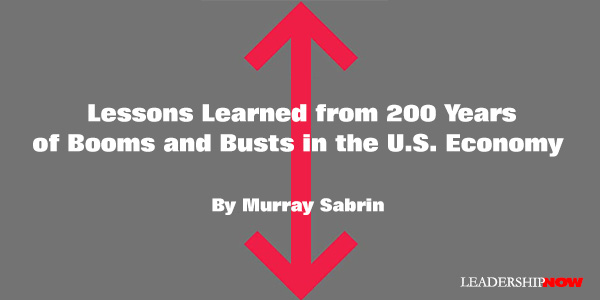
THE business cycle in the United States has been characterized by an ongoing series of economic booms and busts, bubbles and bursts, despite efforts by the Federal Reserve to stabilize the ups and downs. The first recognizable boom and bust cycle in the U.S. economy occurred after the War of 1812 when inflated prices created an unstainable boom. Expansionist activities of farmers, exporters, and, particularly, investment bankers — spearheaded by the Second Bank of United States — sowed the seeds of the boom leading to the bust. Supply of money declined, and liquidity became a problem for many sectors, and the Panic of 1819 soon followed with all the characteristics of future business cycles in the 19th century. Boom-bust cycles, for many decades, were called “panics.” Thirteen financial panics occurred from 1792 to 1896, and the last official panic occurred in 1907. After that, panics were renamed — first to depression and then to the milder sounding term, recession. Following the recovery from the Panic of 1907, President Woodrow Wilson signed the Federal Reserve Act into law in 1913. The Federal Reserve was charged with preventing financial panics and stabilizing the economy. America’s bankers, who spearheaded the effort, finally got a central bank whose mission was to be a lender of last resort, smooth out the business cycle, and maintain the purchasing power of the dollar. Congress expanded the Federal Reserve’s responsibilities in 1946, directing it to promote maximum employment, production, and purchasing power. And in 1978, Congress added price stability and promotion of long-term growth to its mandate. Yet, as history proves, the business cycle hasn’t been “smoothed out.” The U.S. has subsequently been rocked by the Great Depression, followed by several recessions. The reoccurring phenomenon of money creation, speculation, boom, malinvestments, crisis, and depression hasn’t ended, but rather, the Federal Reserve destabilizes the economy by manipulating short-term interest rates. The federal government primes the pump with deficit spending, and the Federal Reserve opens the money spigot to give the economy additional oomph to boost the economy. The inevitable bust arrives when the Federal Reserve raises interests rates and withdraws liquidity from the financial system to dampen the overheated economy. More recently, the dot-com bubble of the late 1990s and the housing bubble of the mid-2000s reaffirm the consequences of the Federal Reserve’s easy money infusions. We’re now in what some analysts call the “everything bubble,” which was well underway before the pandemic struck in 2020. If history is any guide, it could last until the end of the 2020s. The boom-bust cycle, therefore, isn’t inherent in the market economy but instead is a consequence of the Federal Reserve intervening in the short-term money markets ostensibly to stabilize the economy and promote economic growth and full employment. To ride out the peaks and troughs of the boom-bust cycles, businesses must understand and adjust their behavior to the cycle. Here are ways to identify that the economy’s boom cycle is about to end:
The U.S. economy has become dependent on more and more debt — and financial boosts — to generate economic growth. But as history shows, when it comes to the business cycle, what goes up must come down.  
Posted by Michael McKinney at 01:48 PM
11.11.21

Leading Thoughts for November 11, 2021
IDEAS shared have the power to expand perspectives, change thinking, and move lives. Here are two ideas for the curious mind to engage with: Scientist Edward O. Wilson on the unification of knowledge: “The ongoing fragmentation of knowledge and resulting chaos in philosophy are not reflections of the real world but artifacts of scholarship.” Source: Consilience: The Unity of Knowledge The late professor and writer David Foster Wallace on focus: “Twenty years after my own graduation, I have come gradually to understand that the liberal arts cliché about "teaching you how to think" is actually shorthand for a much deeper, more serious idea: Learning how to think really means learning how to exercise some control over how and what you think. It means being conscious and aware enough to choose what you pay attention to and to choose how you construct meaning from experience. Because if you cannot exercise this kind of choice in adult life, you will be totally hosed.” Source: This is Water Look for these ideas every Thursday on the Leading Blog. Find more ideas on the LeadingThoughts index.
Posted by Michael McKinney at 04:27 PM
11.01.21

First Look: Leadership Books for November 2021Here's a look at some of the best leadership books to be released in November 2021. Don't miss out on other great new and future releases not listed here.
Become a next generation leader—rich in emotional and social intelligence and orchestrating outstanding collaborative results—by mastering these eight status quo-shattering paradoxes. The Eight Paradoxes of Great Leadership unpacks the fresh strategies and new mindset required today from a next generation leader. Author Dr. Tim Elmore helps leaders of all kinds navigate increasingly complex, rapidly changing environments, as well as manage teams who bring a range of new demands and expectations to the workplace that haven’t been seen even one generation prior.
By leading with “we”—putting the collective above the individual, holding the sum above the parts, and emphasizing the importance of the role that everyone plays—you can not only help solve the escalating challenges of today but also unlock extraordinary growth for your business, and abundance on our planet. Timely and compelling, this book’s message is simple: The future of profit is people’s purpose, aligned. Lead With We not only examines why we must all conduct business differently in order to grow in today’s market, but provides the how—concrete steps any reader, wherever they find themselves in the business hierarchy, can take toward success.
Does power corrupt, or are corrupt people drawn to power? Are entrepreneurs who embezzle and cops who kill the result of poorly designed systems or are they just bad people? Are tyrants made or born? If you were suddenly thrust into a position of power, would you be able to resist the temptation to line your pockets or seek revenge against your enemies? Based on deep, unprecedented research from around the world, Corruptible will challenge your most basic assumptions about becoming a leader and what might happen to your head when you get there. It also provides a roadmap to avoiding classic temptations, suggesting a series of reforms that would facilitate better people finding a path to power—and ensuring that power purifies rather than corrupts.
Millennials, Baby Boomers, Gen Z—we like to define people by when they were born, but an acclaimed social researcher explains why we shouldn't. Boomers are narcissists. Millennials are spoiled. Gen Zers are lazy. We assume people born around the same time have basically the same values. It makes for good headlines, but is it true? Bobby Duffy has spent years studying generational distinctions. In The Generation Myth, he argues that our generational identities are not fixed but fluid, reforming throughout our lives. Based on an analysis of what over three million people really think about homeownership, sex, well-being, and more, Duffy offers a new model for understanding how generations form, how they shape societies, and why generational differences aren’t as sharp as we think.
The Leader's Mind taps into the same tips and techniques honed by top-tier athletes, such as how to get in a "zone," thrive on a team, and stay humble, to become a champion at work and the ultimate team player at home. Stop struggling with the expectations you face at work and at home by fundamentally changing the way you process what’s happening in your life. The mental edge that sets elite athletes apart outlined in this book will help you become the champion leader you want to be.
Gary Vaynerchuk explores the twelve essential emotional skills that are integral to his life—and business—success and provides today’s (and tomorrow’s) leaders with critical tools to acquire and develop these traits. For decades, leaders have relied on “hard” skills to make smart decisions, while dismissing the importance of emotional intelligence. Soft skills like self-awareness and curiosity aren’t quantifiable; they can’t be measured on a spreadsheet and aren’t taught in B-schools or emphasized in institutions. We’ve been taught that emotional intelligence is a “nice to have” in business, not a requirement. But soft skills can actually accelerate business success, Gary Vaynerchuk argues. For analytical minds, it’s challenging to understand how to get “better” at being self-aware, curious, or empathetic—or even why it’s important to try.
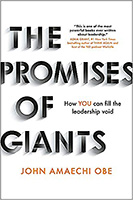 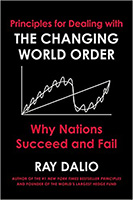 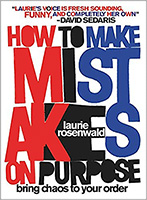
 Build your leadership library with these specials on over 28 titles. All titles are at least 40% off the list price and are available only in limited quantities. “There’s a lot to learn from the right leadership books. If you think you know it, think again. Ask those you trust what books have inspired them, and dig in. Always have at least one book going.” — Kent Taylor, Made From Scratch
Posted by Michael McKinney at 09:53 AM
|
BUILD YOUR KNOWLEDGE


How to Do Your Start-Up Right STRAIGHT TALK FOR START-UPS 
Grow Your Leadership Skills NEW AND UPCOMING LEADERSHIP BOOKS 
Leadership Minute BITE-SIZE CONCEPTS YOU CAN CHEW ON 
Classic Leadership Books BOOKS TO READ BEFORE YOU LEAD |
|